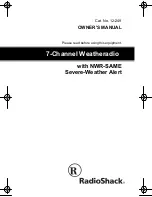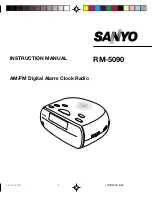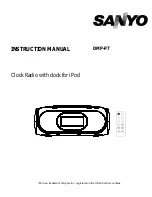
Exalt Communications Inc.
EX-2.4i Installation and Maintenance Manual
Page 23
MAN-002400, Revision 001
2005-12-01
Once again, a drip loop may be required, and proper securing hardware and grounding needs to
be accommodated.
As soon as practical, the connected ends of the transmission line to the antenna and lightning
arrestor should be weatherproofed. Generally this process should be delayed as long as possible
to be certain that all systems are working properly before weatherproofing is applied, as once
weatherproofing is applied, you may be required to remove it if any tests or changes are needed
before installation is complete. However, if the installation is occurring during inclement
weather, extra care must be taken at all times to assure that no moisture enters any connector at
any time. If moisture is suspected to have compromised the antenna or transmission line, it may
render those devices useless without any means for remedy except for full replacement.
It bears mention that on rare occasion, the antenna might be mounted indoors and behind a
window or other barrier. In these cases, there would not be a need for drip loops or an RF
lightning arrestor. In cases such as these, a very short transmission line can typically be
connected directly between the antenna and the radio mounted nearby. In these cases, the
weatherproofing process can also be omitted.
4.3.3 RF Lightning Arrestor
The purpose of the RF lightning arrestor is to provide a direct path to ground for any lightning
strike that may couple to or directly hit the outdoor transmission system or antenna structure. As
such, the RF lightning arrestor prevents the associated voltage and current from entering the
building or enclosure, where it might harm the radio equipment, other equipment, or humans.
The following lightning arrestors are examples of proper devices for this model:
•
Polyphaser AL-LSXM
•
Andrew BB-BNFNFE-26
The RF lightning arrestor shall be mounted and grounded in accordance to the manufacturer’s
recommendations. It shall be placed as close as possible to the egress point where the next piece
of transmission line enters the building or enclosure. Minimize the distance to the egress to the
opportunity for lightning to couple to or strike the section of transmission line that is unprotected
(if any). Where possible, a bulkhead connector should be used to eliminate any opportunity for
this risk. If cable lengths behind the arrestor and into the egress are kept substantially short (less
than 1m), this is typically considered safe practice. Your qualified electrician or installer shall be
consulted in all cases of grounding and lightning arrestor implementation.
4.3.4 Transmission Line from Egress to Radio
Once again, it is desired to have a single transmission line section from the egress to the radio RF
connection. Minimize the number of connectors and adaptors. For indoor runs, a cable ladder or
tray may be needed to properly secure the cable. In some cases, a short flexible jumper may be
















































